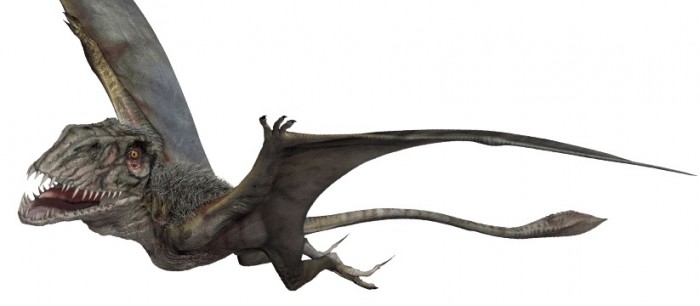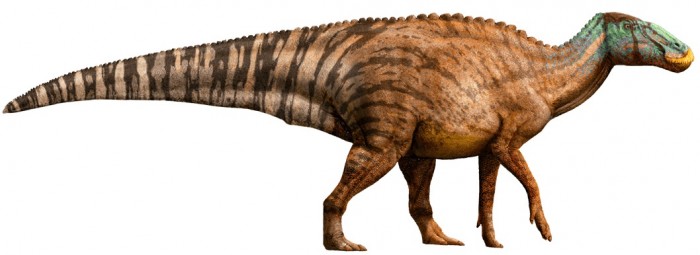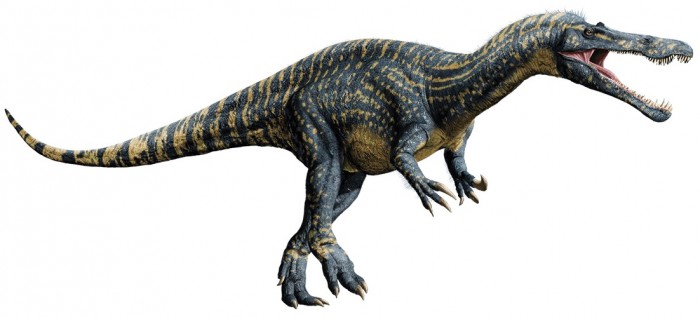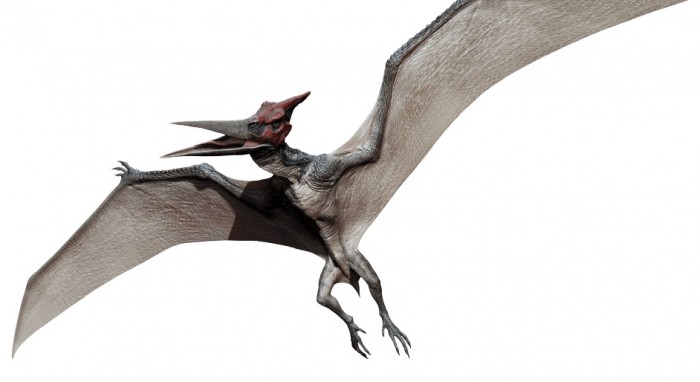Photos: New Jurassic World Dinosaurs Revealed
The official site for Jurassic World has been updated with design renderings for seven new dinosaur species. Some of the Jurassic World dinosaurs have been seen in previous installments of the Jurassic Park franchise, but others are completely new to Jurassic World.
The fact that Universal Pictures has put the designs on the official website signals they probably don't constitute spoilers, so feel free to dive in. Hit the jump to see the new Jurassic World dinosaur designs.
Dimorphodon
Park Area: Aviary
Agression Level: Medium
Name Meaning: "Two-form tooth"
Habitat: England & Mexico
8 ft
3 lbs
Stance: Quadruped/Winged
Diet: Fish and insects
Age: Mid-Jurassic
Dimorphodon is one of our park's pterosaurs, or flying reptiles. It evolved to soar through the Jurassic skies, with large eyes, quick jaws and sharp talons perfect for catching fish—or other prey. The Dimorphodon is a "snap-feeder," with quick jaws suited to snatching fish and insects.
Edmontosaurus
Park Area: Gallimimus Valley
Aggression Level: Low
Name Meaning: "Edmonton Lizard"
Habitat: North America
35 ft
4 tons
Stance: Quadruped or Biped
Diet: Fruit and vegetables
Age: Cretaceous
Edmontosaurus is a flat-headed duck-billed dinosaur. Once threatened by the T. rex, it loves hanging out in herds and munching on conifers and other vegetation. Edmontosaurus is one of the few dinosaurs that can chew, grinding veggies to pulp before swallowing.
Suchomimus
Park Area: Cretaceous Cruise
Aggression Level: Medium
Name Meaning: "Crocodile mimic"
Habitat: Africa
35 ft
3 tons
Stance: Biped
Diet: Carnivore
Age: Cretaceous
The Suchomimus is known for the distinctive sail on its lower back and the huge, foot-long claws on each thumb that it uses to catch fish. Suchomimus gets its name from its distinctive crocodile-like snout.
Metriacanthosaurus
Park Area: Cretaceous Cruise
Aggression Level: High
Name Meaning: "Moderately-Spined Lizard"
Habitat: England, Europe
Stance: Biped
Diet: Carnivore
Age: Mid-Jurassic
A fleet-footed carnosaur, Metriacanthosaurus is named for its distinctively spined vertebrae. It once stalked the ancient Jurassic plains, feeding on other dinosaurs. Metriacanthosaurus is a theropod, which is Greek for "beast foot."
Microceratus
Park Area: Cretaceous Cruise
Agression Level: Low
Name Meaning: "Small-horned"
Habitat: North America, Asia
Stance: Biped
Diet: Herbivore
Age: Cretaceous
Microceratus may be the smallest dinosaurs in Jurassic World. They have short frills and beak-shaped mouths perfect for snapping off leaves and twigs. Microceratus used to be known as Microceratops but lost their name to a species of wasp.
Pteranodon
Park Area: Aviary
Aggression Level: High
Name Meaning: "Toothless wing"
Habitat: North America, Europe
18 ft
70 lbs
Stance: Quadruped/Winged
Diet: Primarily fish
Age: Late Cretaceous
The Pteranodon is our Jurassic World's biggest pterosaur, or flying reptile. With a wider wingspan than any known bird, it's primarily a fish eater, though Pteranodon is very aggressive. Pteranodon have three clawed fingers on each hand, and four clawed toes on each foot.
We've already seen a bunch of dinosaurs from Jurassic World, including the human engineered Indominus Rex in computer rendering and toy form.
See more information on the new Jurassic World dinosaurs and much more on the official Jurassic World website.






